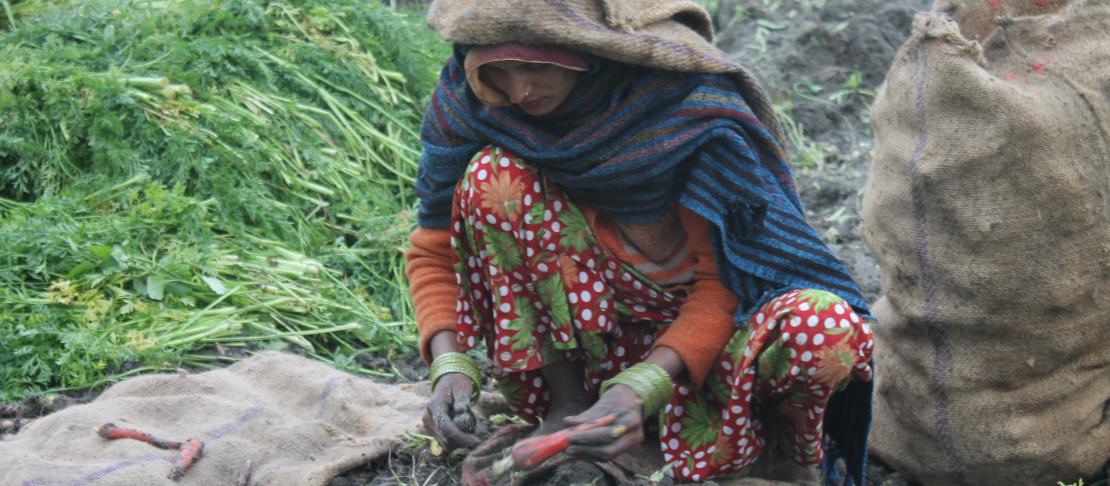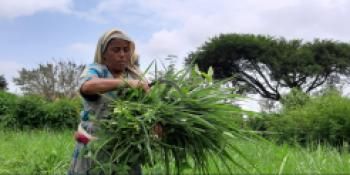Identifying hotspots for gender-focused climate-smart interventions

A new study attempts to map "hotspots" where gender-targeted climate change adaptation measures can be implemented.
In a recently published paper, "Woman in agriculture, and climate risks: hotspots for development," by the CGIAR Research Program on Climate Change, Agriculture and Food Security (CCAFS), "hotspots" for climate risks and women in agriculture have been identified. The intention of the study is to inform policy makers and development practitioners on which geographic regions should be prioritized, based on necessity, for implementing climate change adaptation measures for female farmers.
Definitions: what are hotspots?
Hotspots are defined in the study as regions with high concentrations of women farmers impacted by a high degree of climatic risk. Central to the study was the creation of a methodology for identification of hotspots. The study illustrates the results for India, outlining the major socio-economic constraints faced by women farmers in identified hotspots. A systematic literature review was also carried out in order to highlight the results of studies conducted outside of these hotspots.
Methodology: how to find a hotspot
"Women in agriculture" is defined in the study as the "absolute number of females whose major economic activity is working in agriculture as either a cultivator or a labourer." Using the district (an administrative division of an Indian state or territory) as the unit, the number of women in agriculture was obtained by compiling rural-level data on female cultivators and labourers in agriculture.
Drought, extreme rainfall and heat waves, all of which have a substantial negative impact on major crops, are the three types of climatic risks that were mapped using gridded data from the Indian Meteorological Department. Using a geographic information system (GIS), hotspots were identified by overlaying female participation with climate risks. Jenk’s natural break classification was used to classify the data for these two parameters into five different categories (very low, low, medium, high, and very high). The intersections of "high" and "very high" classes for the parameters in the overlay analysis indicated districts where the largest populations of women in agriculture are impacted by higher degrees of climate risks, i.e. the hotspots.
Key findings
The study shows the involvement of 94.2 million women farmers across 641 districts, with different levels of participation in agriculture in India. Women farm labourers form the majority of the female agricultural workforce. These farmers face multiple climatic risks with varying degrees of impact in the agriculture system.
The overlay analysis highlighted 36 hotspot districts across 10 states, spread across the northern and central parts of the country. These districts contain 13.6 million women farmers—57.4% of whom work as laborers—or 14.4% of the total number of women involved in agriculture across the country.
The study's socioeconomic characterization of the hotspot population identifies constraints faced by women in agriculture subject to climatic risks: labor, credit and market access (for cultivators) along with lower wage rates (for labourers) were highlighted as some of the major barriers.
The study emphasizes climate-smart agriculture (CSA) technologies and practices as an approach to overcoming these barriers. CSA solutions proposed include: information and communication technology (ICT)-based agro-advisory services, labour-saving practices like direct seeded rice and a system of rice intensifications, contingent crop planning and livestock management for improved outcomes.
Finally, a systematic review of the literature on gender and climate change in agriculture in India resulted in a list of 23 studies that were conducted in the last 10 years across multiple districts in the country. While 21 of these studies have been conducted outside hotspot districts, the paper emphasizes lessons from these studies for future efforts to help women farmers overcome the constraints identified. Among the lessons: the important role of training and capacity building, self-help groups and social networks in strengthening the adaptive capacity of women farmers.
Read the journal article: Woman in agriculture, and climate risks: hotspots for development
Nitya Chanana is a Gender and Social Inclusion Consultant for CCAFS South Asia. Shehnab Sahin is the Communications Specialist for CCAFS South Asia.



